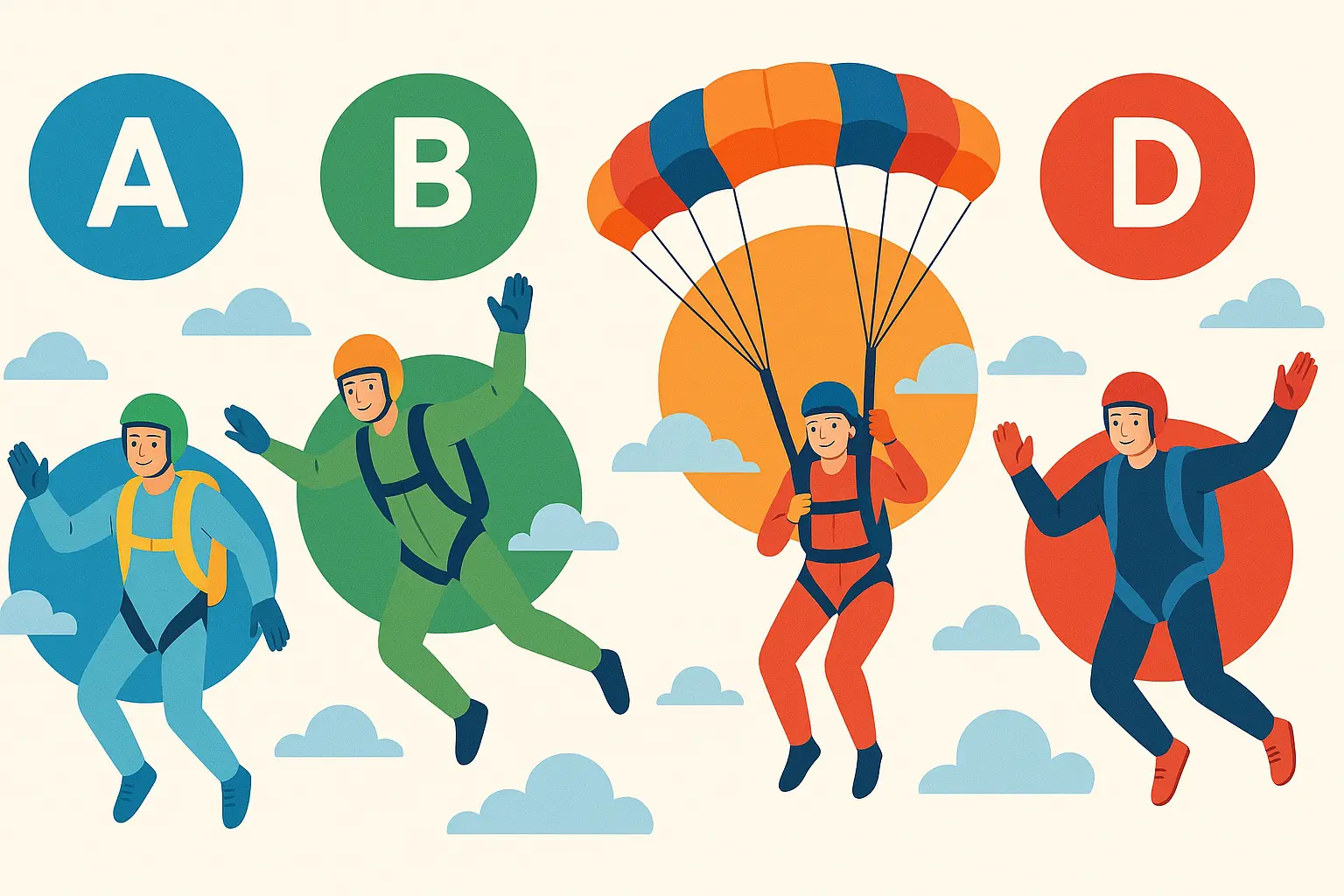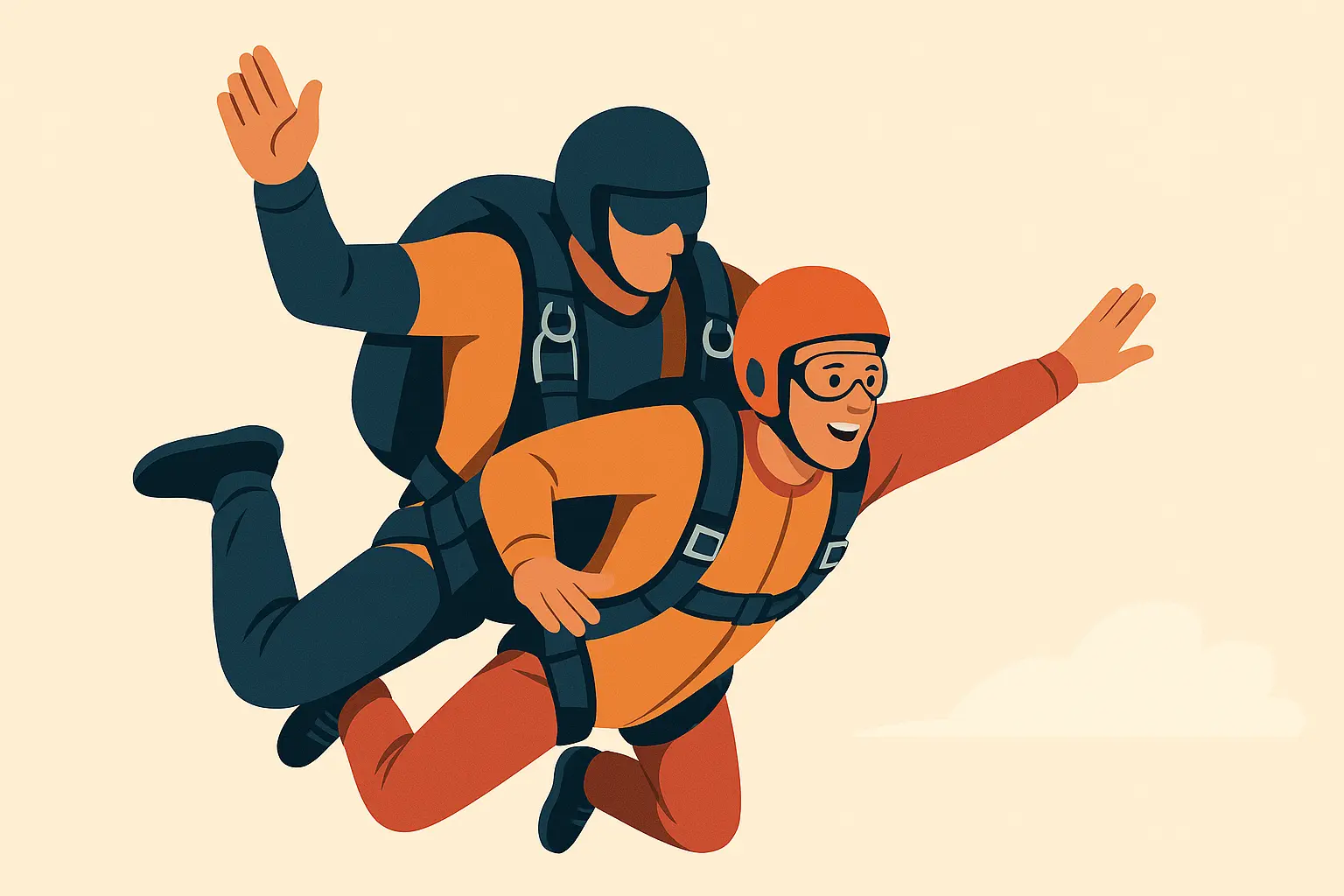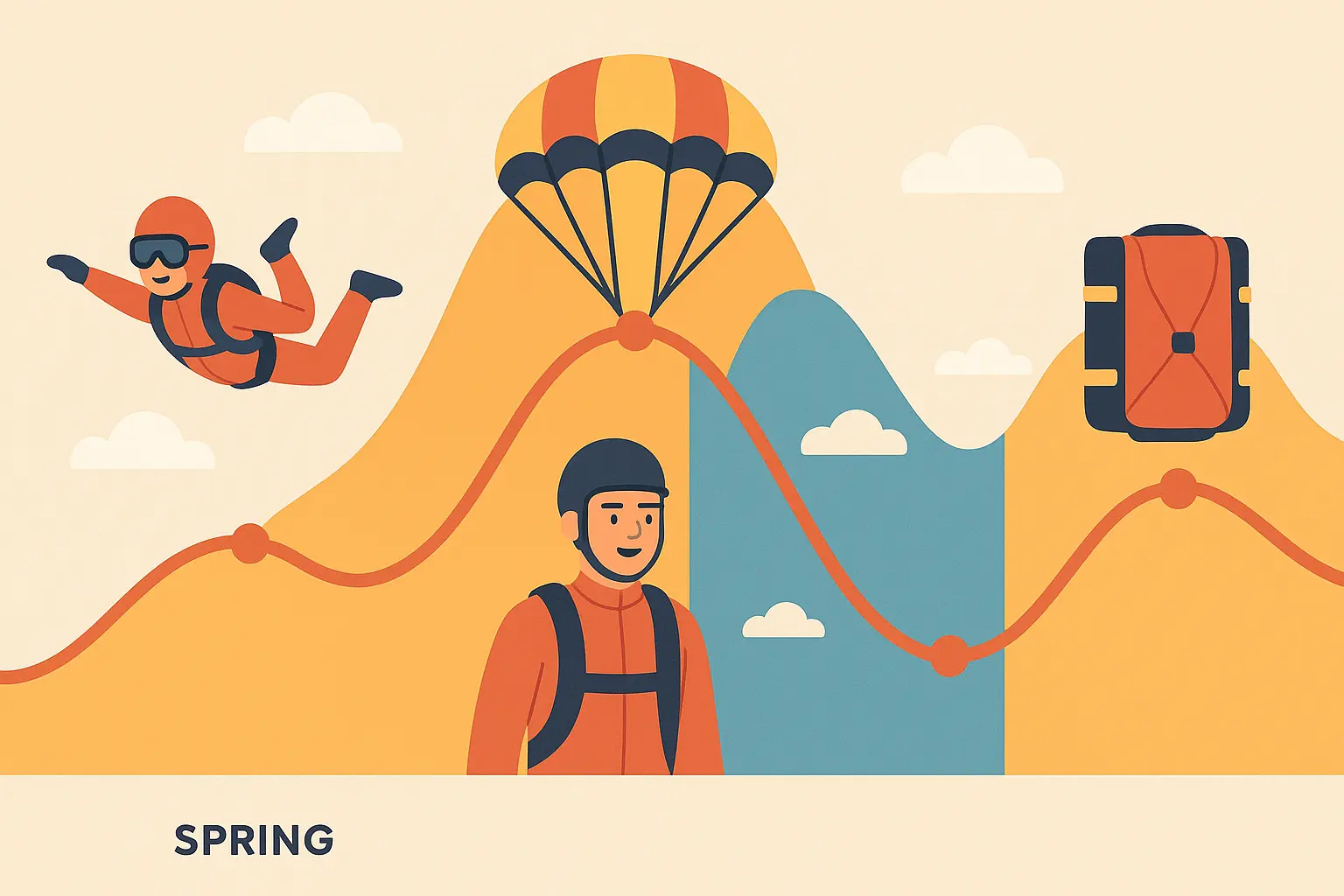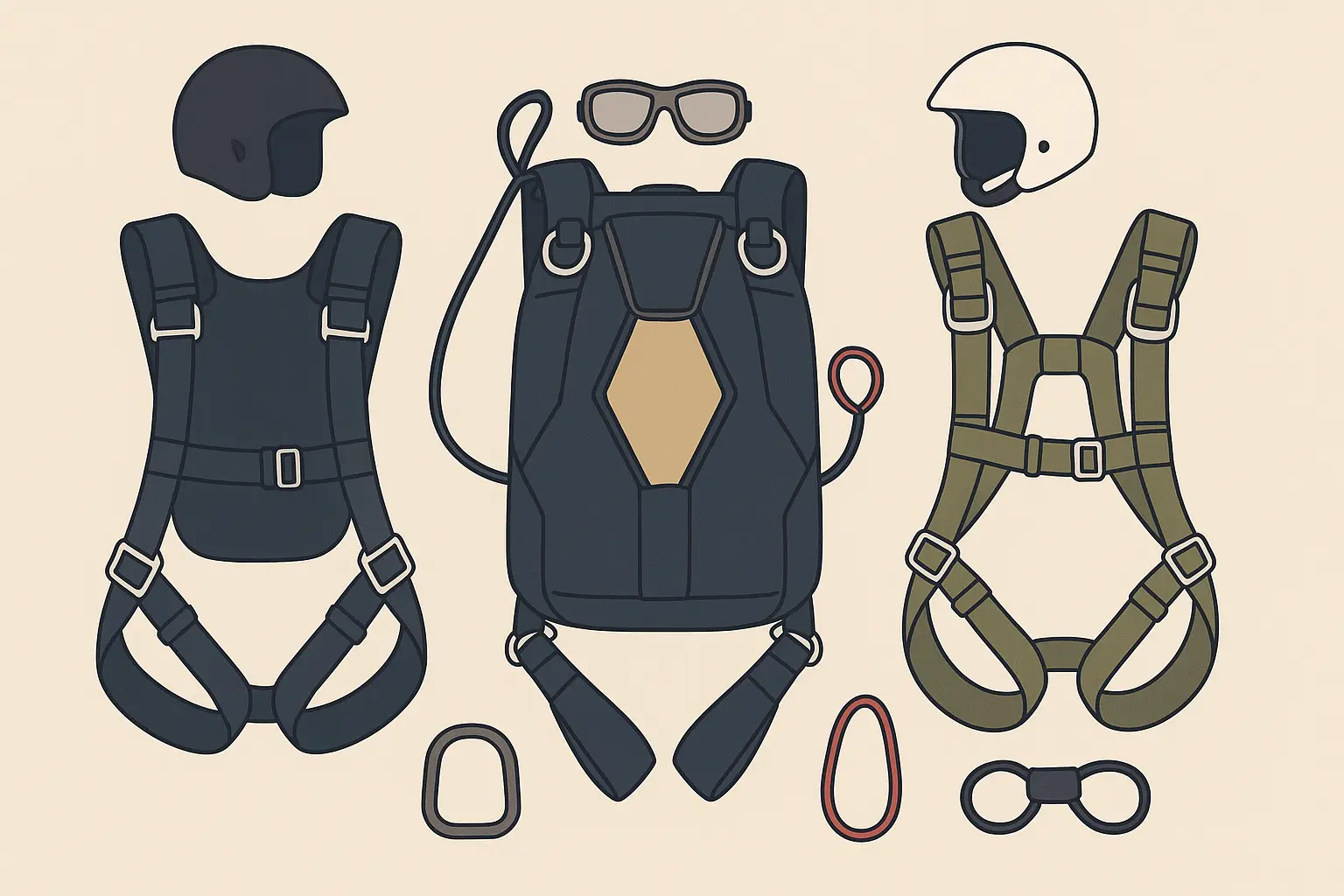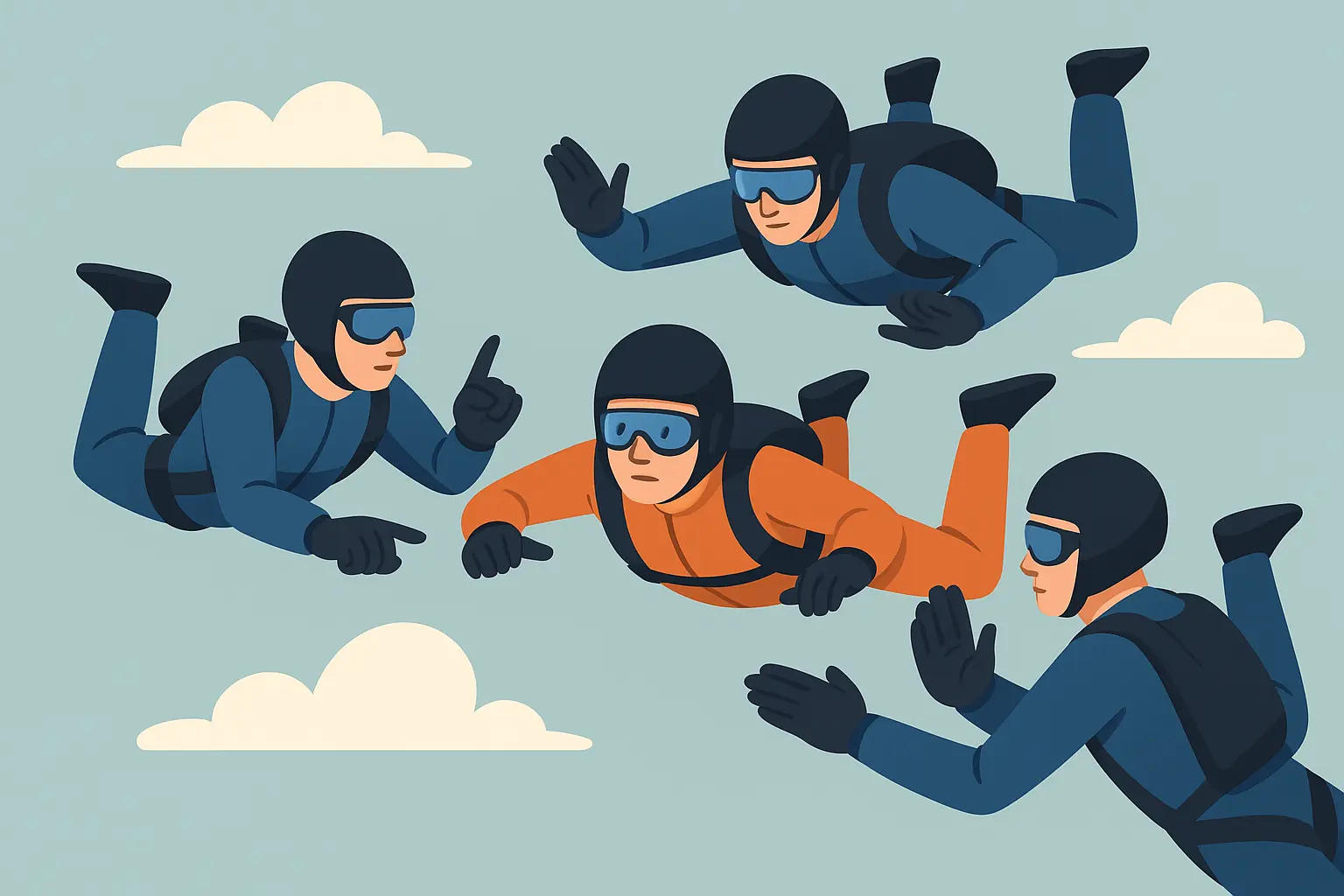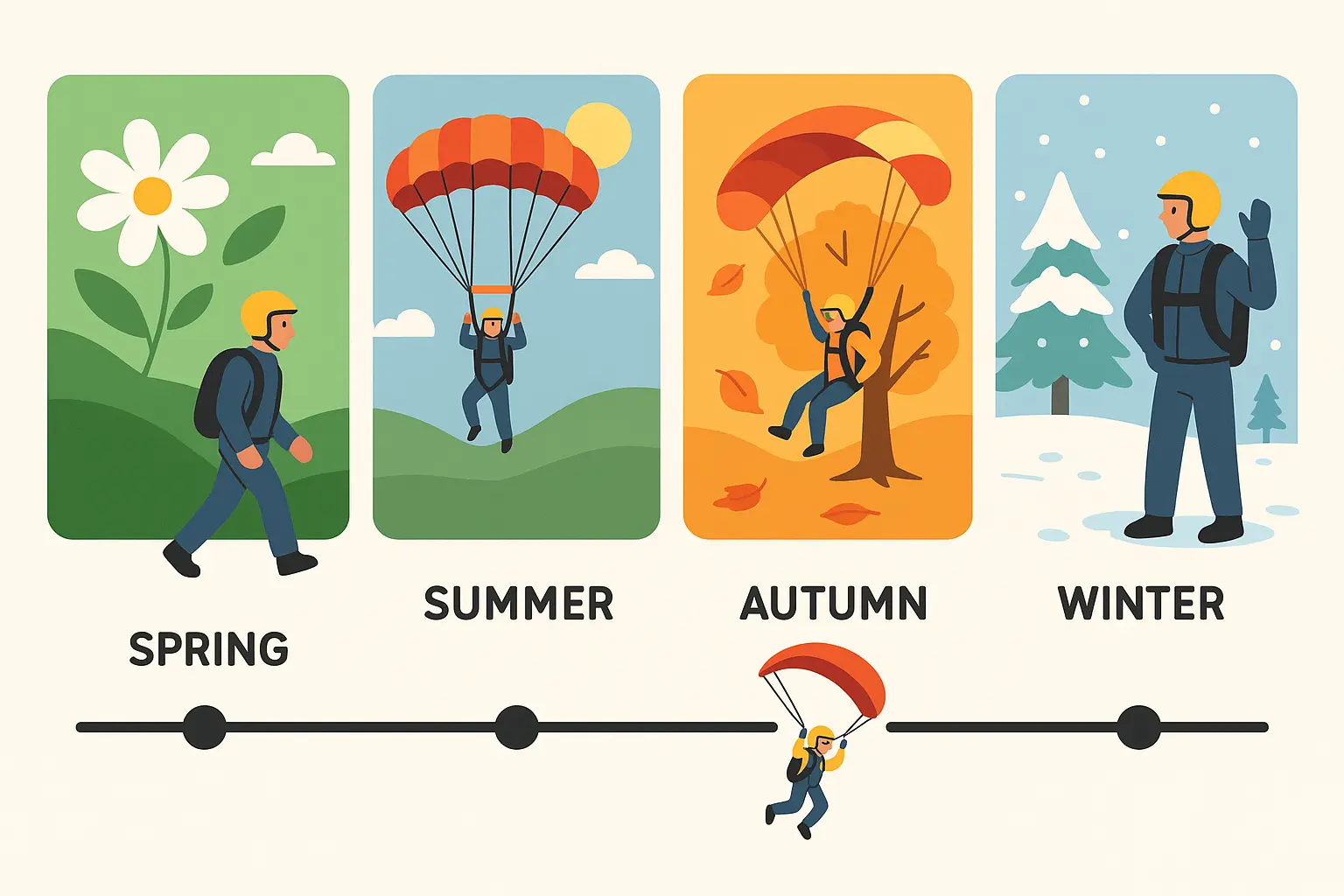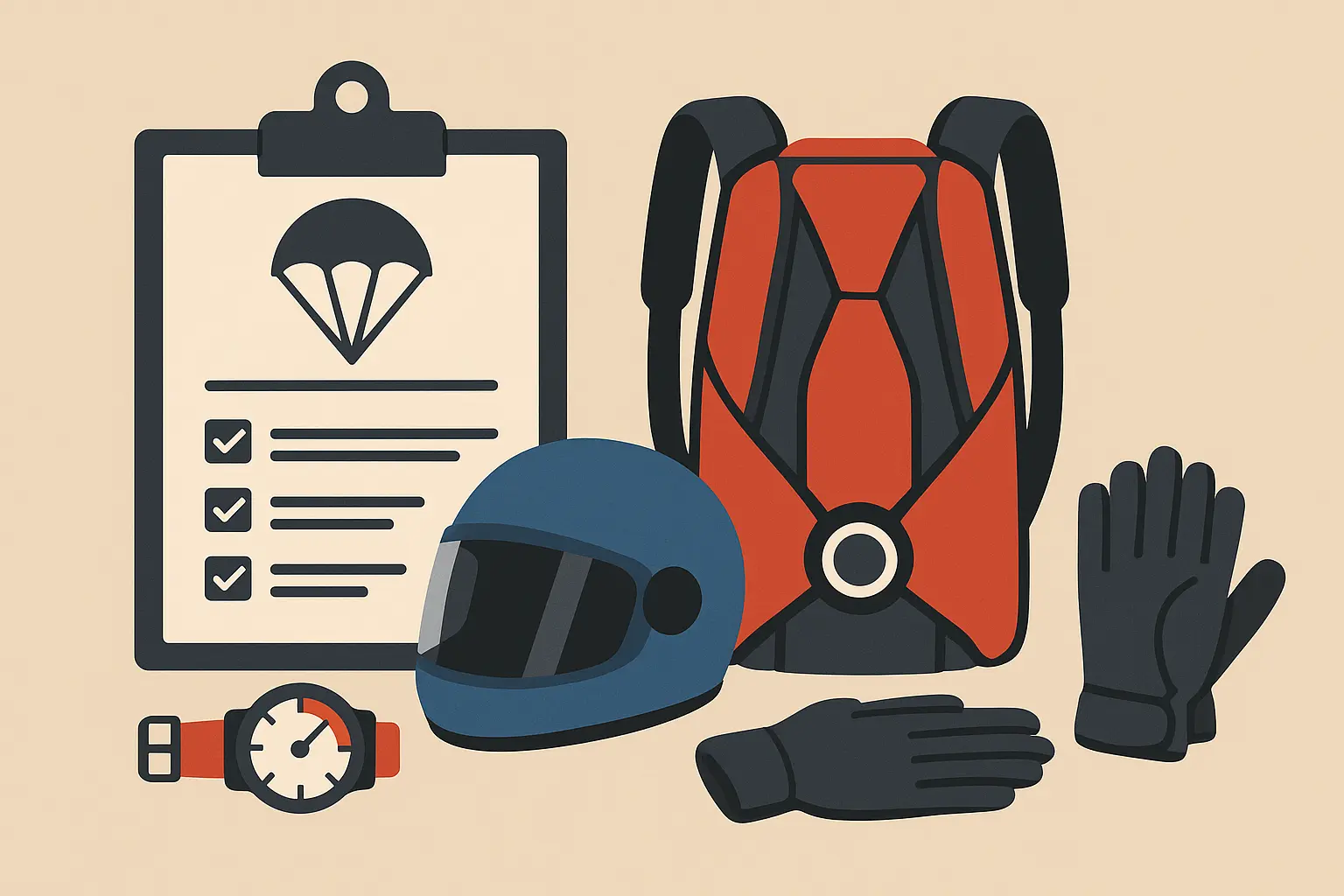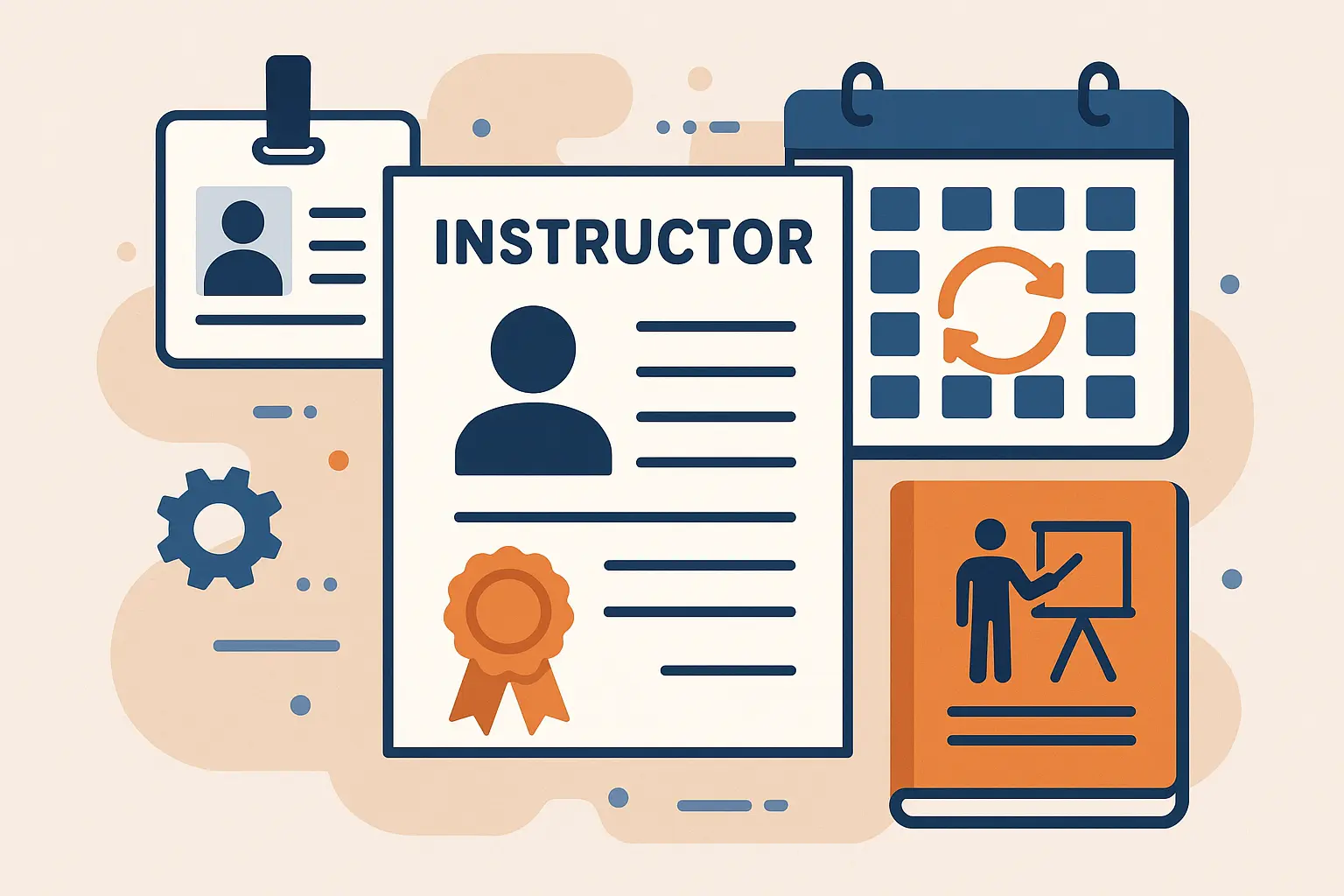Three years ago, I was that person gripping the airplane door, wondering if I’d lost my mind. Today, I’m the one convincing nervous first-timers to take that step. Here’s everything I wish someone had told me about becoming a skydiving instructor.
Let me be straight with you: becoming a skydiving instructor isn’t just about loving the rush of freefall. It’s about three years of dedication, around $15,000 in training and gear, and accepting that some days you’ll make great money while others you’ll sit around waiting for the weather to clear.
But if you’re serious about turning your passion into a paycheck, here’s the real roadmap.
While becoming an instructor requires a minimum of three years in the sport and 500 skydives according to USPA requirements, the journey from first-timer to professional typically spans 18-24 months of dedicated jumping and training.
The Bottom Line (Because You’re Probably Wondering)
-
You need 500+ jumps and a D License before you can even start instructor training
-
Expect 18-24 months to get there if you’re jumping regularly
-
Tandem instructors make $25-50 per jump (I average about $45,000 annually)
-
Your first equipment setup will cost $8,000-15,000
-
Yes, you need to be in good shape – you’ll be carrying 200+ pounds of student and gear
-
Tandem instructors can complete 5-15 jumps daily during peak season, with annual earnings ranging from $30,000-80,000
-
AFF instructors command higher rates ($40-80 per jump) but have fewer opportunities
-
Geographic location significantly impacts both training timeline and earning potential
-
Medical clearance and physical fitness standards are mandatory for all instructor paths
Your First Steps: The License Ladder
Look, I’m not going to sugarcoat this – you can’t just decide to become an instructor after a few tandem jumps. The USPA has a license system for a reason, and you’ll need to climb every rung.
A License: Learning Not to Die
Your A License takes 25 jumps, but those aren’t just numbers. You’re proving you can land where you’re supposed to, handle your gear when things go sideways, and not panic when stuff goes wrong (because it will).
Most people knock this out in 2-3 months if they’re jumping consistently. The key word is “consistently” – weekend warriors take way longer.
According to USPA requirements, skydivers need 25 total skydives including 7 AFF jumps and at least 5 coach jumps to earn their A License, establishing the foundation for all future instructor ambitions. Understanding the importance of maintaining proper documentation becomes crucial as you progress through each license level.
B and C Licenses: Getting Serious
The B License at 50 jumps starts introducing formation flying – you know, actually flying with other people without crashing into them. The C License at 200 jumps is where things get real with night jumps and water training.
Here’s what nobody tells you: that jump from 50 to 200 is where you either get hooked for life or realize this isn’t for you. You’ll experience your first real equipment malfunction, deal with sketchy weather, and probably scare yourself at least once. It’s all part of the education.
D License: Your Golden Ticket
At 500+ jumps, you finally qualify for instructor training. But honestly? 500 jumps is just the minimum. Most successful instructors I know had 700-1,000 jumps before they felt truly ready to be responsible for someone else’s life.
Sarah from my drop zone hit her 500 jumps after 18 months of dedicated jumping. She thought she was ready for instructor training but decided to wait until 650 jumps after experiencing a student panic attack during a coach jump. Smart move – that extra experience made all the difference when she later had to manage similar situations as a certified instructor.
The Physical Reality Check
Let’s talk about something most blogs skip: this job will beat up your body.
Medical Clearance Isn’t Just Paperwork
You need a doctor to sign off that your heart, eyes, and brain can handle the stress of instruction. This isn’t a rubber stamp – the doc needs to understand you’ll be making life-or-death decisions while carrying extra weight at altitude.
If you’ve got any medical conditions, deal with them honestly upfront. The industry has seen too many close calls from instructors who weren’t physically prepared. The physical demands are real – injury risk stands at 0.5 per 1,000 jumps, emphasizing why medical certification and physical fitness standards are so crucial for professional instructors.
Tandem Instruction: Your Back Will Hate You
Tandem instructors carry 150-200 pounds of student and gear through every jump. On busy days, that’s 10-15 times. Your back, knees, and shoulders need to handle this load while maintaining control and potentially dealing with emergencies.
I learned this the hard way during my first busy weekend. By Sunday afternoon, I could barely walk. Now I hit the gym religiously and stretch before every jump day.
The importance of rigorous training and safety standards was highlighted in a recent “tragic plane crash in North Carolina that killed three skydiving professionals” Mirror, underscoring how the industry’s safety protocols exist to protect both instructors and students in this inherently risky profession.
Choosing Your Path: Tandem vs. AFF
This decision shapes your entire career, so let’s break it down honestly.
Tandem: Volume and Variety
Tandem instruction is where the money is. You’ll do more jumps, deal with more variety (terrified grandmothers to adrenaline junkies), and have steadier work. But you’re literally attached to people who might panic, freeze up, or worse.
The good news? Most tandem students are just excited and nervous. The bad news? That small percentage who completely lose it can make your day very interesting.
AFF: Teaching and Patience
AFF instructors work with students learning to skydive solo. Higher pay per jump, but fewer opportunities. You need serious teaching skills because you’re explaining complex concepts to people whose brains are flooded with adrenaline.
Plus, AFF students make mistakes – sometimes dangerous ones. Your job is keeping them safe while they learn, which requires a different skill set than tandem work.
The training intensity reflects the responsibility – tandem instructors must complete at least 100 jumps and hold a USPA B license before even beginning coach training, which is a prerequisite for tandem certification.
|
Instruction Type |
Market Demand |
Average Pay per Jump |
Student Experience Level |
Physical Requirements |
|---|---|---|---|---|
|
Tandem |
High volume |
$25-50 |
First-time jumpers |
High (carrying student) |
|
AFF |
Moderate volume |
$40-80 |
Learning skydivers |
Moderate (formation flying) |
|
Coach Rating |
Steady demand |
$30-60 |
Licensed beginners |
Low (supervision focused) |
|
Advanced Specialties |
Niche market |
$60-100+ |
Experienced skydivers |
Varies by specialty |
The Money Talk (Finally)
Everyone wants to know about the cash, so here’s the truth from someone actually doing it.
Tandem Instructor Reality
I make $35 per tandem jump at my drop zone. On good days, that’s 12-15 jumps. Bad weather days? Zero income. Last year I grossed about $45,000, but that’s before equipment costs, insurance, and the fact that I basically don’t work three months during winter.
Tourist areas pay more per jump but cost more to live. Local drop zones might pay less but offer better relationships and steadier work with repeat customers.
AFF Pays More, But Less Often
AFF instructors at my DZ make $55-70 per jump, but only do 2-4 jumps on busy days. The math works out to decent money if you can stay busy, but AFF students are a smaller market than tandem customers.
Smart instructors combine both ratings. Diversification smooths out the income swings that come with weather-dependent work.
The real money often comes from combining services – tandem instruction, AFF training, coaching ratings, and additional services like camera work or equipment sales. Long-term success involves building relationships within the industry, developing specialized expertise, and eventually transitioning into roles that aren’t entirely dependent on daily jumping conditions.
The heroic actions of instructors like “David Hartsock, who saved his student’s life during a parachute malfunction despite becoming paralyzed himself” LADbible, demonstrate the level of responsibility and split-second decision-making that defines professional instruction careers.
Training: What You’re Actually Getting Into
Tandem Training Intensity
Tandem instructor training is 2-3 weeks of intensive work. You’ll do 25 training jumps with evaluators watching your every move. They’re looking for safe, consistent performance under pressure – because that’s exactly what the job requires.
The manufacturer courses (Strong, UPT, or Relative Workshop) teach you to be responsible for someone else’s life from door to landing. Equipment checks, emergency procedures, student management, and keeping nervous first-timers calm – it’s a lot more than just knowing how to skydive.
Equipment Familiarization and Safety Protocols
Tandem equipment is complex, expensive, and your student’s life depends on your understanding of every component. You’ll learn pre-jump inspections, in-flight adjustments, emergency procedures, and post-jump equipment care that goes far beyond personal gear.
Pre-Jump Equipment Checklist:
-
Harness fit and adjustment verification
-
Reserve handle accessibility check
-
Cutaway handle position confirmation
-
AAD (Automatic Activation Device) status verification
-
Radio functionality test
-
Altimeter calibration check
-
Student harness proper attachment
-
Emergency procedure briefing completion
AFF: Teaching While Flying
AFF training focuses on formation flying with students while providing real-time instruction. You’re not attached to them, so your ability to maintain contact and provide guidance requires advanced freefall skills.
The ground school component is huge – you’ll spend hours in classrooms teaching everything from basic physics to emergency procedures. Your ability to explain complex concepts clearly directly impacts student safety.
Progression Management and Student Assessment
AFF students advance through multiple levels, and you’re responsible for accurately assessing their readiness to progress. This requires understanding learning curves, identifying when students need additional practice, and making decisions that balance safety with student advancement.
Mike, an AFF instructor with 2,000 jumps, recalls a student who struggled with altitude awareness on Level 4. Rather than advancing the student to Level 5, Mike recommended additional Level 4 jumps with specific altitude exercises. The student later thanked him, saying the extra practice prevented a dangerous low pull on subsequent jumps. This decision-making ability separates good instructors from great ones.
The Real Timeline and Geographic Impact
From zero experience to certified instructor typically takes 18-24 months of active jumping. That assumes you’re jumping multiple times per week and have decent weather.
I started jumping in March, got my A License by June, and earned my D License the following February. Tandem instructor training happened in April – total time was 13 months, but I was jumping 3-4 times per week and traveling to warmer climates during winter.
Geography Matters More Than You Think
Northern drop zones shut down for months, extending your timeline and limiting earning potential. Year-round locations offer faster progression but higher competition and living costs.
I trained in Florida but work in Colorado now. The seasonal nature here means I make most of my money in six months, which requires careful budgeting and often winter work in other industries.
Climate considerations go beyond weather – you need to think about market demand, competition levels, cost of living, and long-term career opportunities in different regions. Some areas offer great training environments but limited career prospects, while others provide steady work but fewer learning opportunities.
Equipment: Your $15K Investment
Professional gear costs serious money, and that’s just the beginning.
Initial Setup Costs
-
Main parachute: $2,500-4,000
-
Reserve parachute: $2,000-3,000
-
Container/harness: $3,500-5,000
-
AAD (automatic activation device): $1,200-1,500
-
Altimeter, helmet, goggles, jumpsuit: $1,000-2,000
Ongoing Expenses Nobody Mentions
Reserve repacks every 180 days cost $175. Liability insurance runs $800-1,200 annually. Equipment maintenance and eventual replacement add up fast. I budget about $3,000 per year for gear-related expenses.
Jake invested $12,000 in professional gear when he became a tandem instructor. Within two years, he spent an additional $3,500 on reserve repacks ($150 every 6 months), liability insurance ($800 annually), equipment maintenance ($400 annually), and gear updates. His actual equipment costs averaged $2,750 per year – significantly impacting his net earnings calculations.
Professional-grade equipment experiences significantly more wear than recreational gear due to frequent use and varying conditions. Main parachutes typically need replacement every 1,000-2,000 jumps, while reserve parachutes require repacking every 180 days regardless of use.
Equipment Maintenance Schedule:
-
Reserve repack every 180 days ($150-200)
-
AAD battery replacement every 2 years ($200-300)
-
Main parachute inspection every 100 jumps
-
Harness/container annual inspection ($75-125)
-
Altimeter calibration annually ($50-75)
-
Radio equipment maintenance as needed
Staying Current: The Never-Ending Requirements
Getting certified is just the start. Tandem instructors need 100 jumps every 24 months plus recertification training. Miss your currency and you’re looking at expensive, time-consuming recertification.
The requirements exist for good reasons – skills deteriorate without practice, and industry standards evolve constantly. Staying current keeps you sharp and maintains the confidence needed for emergency situations.
Professional development goes beyond meeting requirements – successful instructors actively seek opportunities to improve their skills, learn new techniques, and stay connected with industry developments. This ongoing learning directly impacts your effectiveness and earning potential.
Annual Professional Development Checklist:
-
Complete required currency jumps
-
Attend manufacturer equipment updates
-
Review updated USPA regulations
-
Participate in safety seminars
-
Complete recertification training
-
Update insurance coverage
-
Network at industry events
Advanced Specializations
Once you’re established, specialized ratings can boost your income:
-
Camera work (requires expensive equipment but adds $50-100 per jump)
-
Competition coaching ($75-150 per hour)
-
Military contract work (higher rates but requires security clearances)
-
Wingsuit instruction (premium rates but significant additional training)
Each specialization requires investment in training and equipment, but they help differentiate you in competitive markets.
Military contracts, competition training, wingsuit instruction, and camera services all offer opportunities for experienced instructors to command premium rates. These specializations require significant additional training and often substantial equipment investments.
Competition coaching and performance training appeal to experienced skydivers looking to improve their skills, offering higher per-hour rates but requiring extensive knowledge of advanced techniques and training methodologies.
Building Your Professional Network
Success in instruction often depends as much on relationships as technical skills. Building connections with other instructors, drop zone operators, and industry professionals creates opportunities for work, mentorship, and career advancement that aren’t available through formal training programs alone.
Experienced instructors who take you under their wing can accelerate your learning curve and help you avoid common mistakes that could damage your reputation or safety record. These relationships often develop naturally through consistent presence at drop zones and demonstrated commitment to safety and professionalism.
Skydiving conventions, safety seminars, and manufacturer training events provide opportunities to learn advanced techniques, stay current with industry developments, and build relationships that can lead to specialized work opportunities or positions at different drop zones.
Market Analysis for Career Planning
Understanding regional demand patterns helps you make informed decisions about where to build your career. Tourist destinations typically offer higher tandem volume but seasonal fluctuations, while areas with active local communities provide more consistent AFF opportunities and advanced training work throughout the year.
Choosing the right drop zone for your training significantly affects both the quality of your education and your future networking opportunities. High-volume commercial operations expose you to diverse student interactions and fast-paced environments, while smaller facilities often provide more personalized mentorship and closer relationships with experienced instructors.
Many instructors leverage seasonal opportunities internationally, working summer seasons in different hemispheres or pursuing specialized training in locations known for specific disciplines. This requires additional certifications and work authorization but can significantly expand career opportunities.
The Honest Truth About This Career
Instruction combines incredible highs with real challenges. You’ll share amazing experiences with people, work in a community of passionate adventurers, and literally help others overcome their fears.
You’ll also deal with weather delays, equipment problems, difficult customers, and the constant responsibility of keeping people safe in an inherently dangerous activity. Some days you’ll question whether the irregular income and physical demands are worth it.
For me, they are. Three years in, I still get excited watching first-time jumpers experience freefall. The look on their faces when they realize they just flew – that never gets old.
But go in with realistic expectations. This isn’t a get-rich-quick scheme or an easy way to fund your jumping habit. It’s a legitimate career that requires serious commitment, ongoing investment, and genuine passion for both skydiving and teaching.
Career growth often means moving into management roles, specialized training, or drop zone ownership. Chief Instructor positions, Safety Officer roles, and Instructor Examiner status offer more stable income and year-round employment opportunities.
Advanced career progression often requires maintaining comprehensive documentation of all certifications and professional achievements throughout your instructional journey.
Professional Documentation and Career Support
Throughout your career, you’ll accumulate numerous certifications, training records, and professional credentials that represent significant investments in time and money. When important documents become lost, damaged, or need replacement for professional purposes, services like ValidGrad’s document recreation provide reliable solutions for maintaining backup copies of your achievements.
Whether you need replacement certificates for insurance documentation, backup copies for career portfolios, or display versions of your credentials for professional settings, proper documentation ensures your accomplishments are preserved and accessible throughout your instructional career.
Professional certification often requires maintaining proper documentation for both legal compliance and career advancement opportunities.
Final Thoughts
Becoming an instructor requires serious commitment involving significant time, financial investment, and ongoing dedication to safety and skill development. The rewards go beyond income; you’re sharing one of the most incredible experiences possible while building a career in an industry filled with passionate, adventurous people.
The journey from first-time jumper to certified instructor demands patience, persistence, and genuine passion for both skydiving and teaching. Success comes to those who understand that instructor work combines technical expertise, physical fitness, teaching ability, and split-second decision-making under pressure.
If you’re still reading and thinking “I want to do this,” then maybe you’ve got what it takes. Start with that first jump and see where it leads. Just remember – once you’re hooked on the sky, there’s really no going back.
With proper preparation, realistic expectations, and commitment to ongoing professional development, a career in instruction offers the unique opportunity to literally help others soar while building a fulfilling profession in one of the world’s most exhilarating sports.
As you progress through your instructor journey, remember that maintaining proper documentation of all your certifications and achievements is crucial for career advancement and professional credibility in this demanding field.

